
Photograph: Yadid Cohen
Being a retired gentleman has advantages. For example, my wife and I wanted to visit the Joe Alon Center - the Museum of Bedouin Culture near Kibbutz Lahav, northeastern Negev desert. We named a date in the middle of the week, avoiding the madness of the Sunday drivers and off we went. We left early as it was quite a long drive traveling the opposite way to the drivers hurrying to their jobs in the big cities; it was an open road to the center where we could enjoy at leisure the area rich in archaeology and scenic beauty with Bedouin encampments along the way.
At the Joe Alon Center we learned about the Bedouin, a nomadic people of the desert. The Center was founded by the Joe Alon Association with the assistance of the Jewish National Fund and various donors to honor the memory of Joe Alon, a pilot in the Israel Air Force. The term 'bedouin' is derived from the Arabic word 'badu' (sing. 'badawi') meaning 'desert dwellers'. The Bedouin people would like to refer to themselves as 'Arabs', a term used for desert nomads in the pre-Islamic era. The traditional way of the Bedouin is based mainly on herding animals, mainly goats, sheep and camels, and partly on small-scale farming. Among the Bedouin, hospitality and simple, immediate justice are rules of conduct. The lands through which the Bedouin roam are the vast deserts of the Arabian Peninsula and the adjacent regions to the north (Israel, Syria and Jordan). http://www.joealon.org.il/english/eng_about.htm
We saw a display of a Bedouin’s man’s traditional dress, the long robe (thob), dish-dash or jallabiya, a wide sleeveless cloak (abtyeh) and the plain or checked headdress, the (keffiya) with head ropes (agal) – the feet are shoed in open leather sandals. Today many Bedouin prefer the European style jackets to their traditional robe.
The dress of the Bedouin women is well adapted to the rigors of the extremes in temperatures in the desert, being long and loose fitting and having several layers which provide good insulation against heat and cold. Women's clothing in various colors denotes social and marital status, and can indicate the tribe or locality from which she comes. A Bedouin appreciates her collection of jewelry both for its ornamental value and as an outward sign of her marital status. (Her jewelry is part of the bride price paid by the groom to her father and is entirely her own property.)
At the Center we enjoyed Bedouin hospitality under a genuine goat's hair tent and we were served sweet tea in the true traditional manner – with a taste of pita-bread with labaneh cheese and olive oil. The tea was prepared by the host himself over a fragrant wormwood (shih) small fire. Upon the arrival of the visitors, tea is brewed in a small kettle by our host and poured into small glasses with plenty of sugar. Tea (or coffee) is always poured with the pot in the left hand and the cups in the right hand, according to tradition. The sound of a reed flute is heard and through our imagination we saw a Bedouin shepherd passing by with his flock of goats.
The Bedouin tent in which we sat cross-legged on the ground is ideally suited to the desert environment and to the nomadic way of life. The tent is called 'baytal-sha'ar', the house of hair, meaning it is woven from the hair of animals, mainly goat's hair. When the rare rains pour down in the winter months the weave contracts and doesn't let the water in. In the heat of the summer the outside of the tent feels very hot to the touch while the inside remains blissfully cool. One section is the man's domain where they receive visitors and meet to discuss tribal affairs; the focal point of the men's section is the fireplace where they keep various utensils for making tea or coffee. The other section is reserved for the women, where they prepare food, take care of their brood, and where the whole family sleeps.
Besides the magnificent exhibition of Bedouin culture, other interesting things are offered at the Joe Alon Center - the observation deck where one has a panoramic view overlooking the northern Negev desert, the scenic Hebron hills, the Lahav nature reserve and forest, the broad view of Jewish and Bedouin settlements in the area, and the 'herb and spice garden' containing different plants which are used in traditional Bedouin medicine. A special wing holds a complex of five life size cave models representing caves of varied geological periods and cultures in the area.
The exhibition was a marvel in itself – finely wrought silver and beaded jewelry with some decorated with real coins – men's personal objects consisting of weapons and smoking items, various riding and packing saddles and cloth decorations for camels – and last but not least, the tools the Bedouin use for farming and herding their flocks.
After our tour of the museum we went to the gift shop for a bit of refreshment including a delicious slice of cake. Then we looked at the offerings of the gift shops of various Bedouin artifacts such as their exquisite jewelry and wood carvings.
Opening Hours:
Saturday –Thursday / Summer: 9am – 5pm / Winter: 9 am – 4 pm (Friday 9 am – 2pm)
Contact information:
Joe Alon Center
Kibbutz Lahav, D.N. Hanegev, 85335
Tel: 08-9913322
Fax: 08-9919889
Email – joealon@lhv.org.il
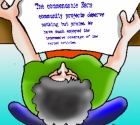 DEAR EDITOR 152
DEAR EDITOR 152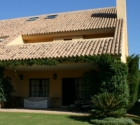 TIDBITS, COMMENTS AND ODDITIES-152
TIDBITS, COMMENTS AND ODDITIES-152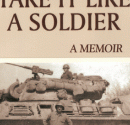 TAKE IT LIKE A SOLDIER - A MEMOIR - A Review
TAKE IT LIKE A SOLDIER - A MEMOIR - A Review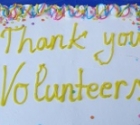 A new website in English - on Volunteering - Launched in Israel
A new website in English - on Volunteering - Launched in Israel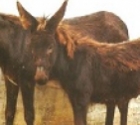 Help Needed for Abused Horses and Donkeys
Help Needed for Abused Horses and Donkeys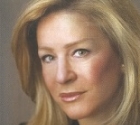 Heather's Heseg
Heather's Heseg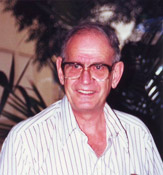 Norman A. Rubin
Norman A. Rubin